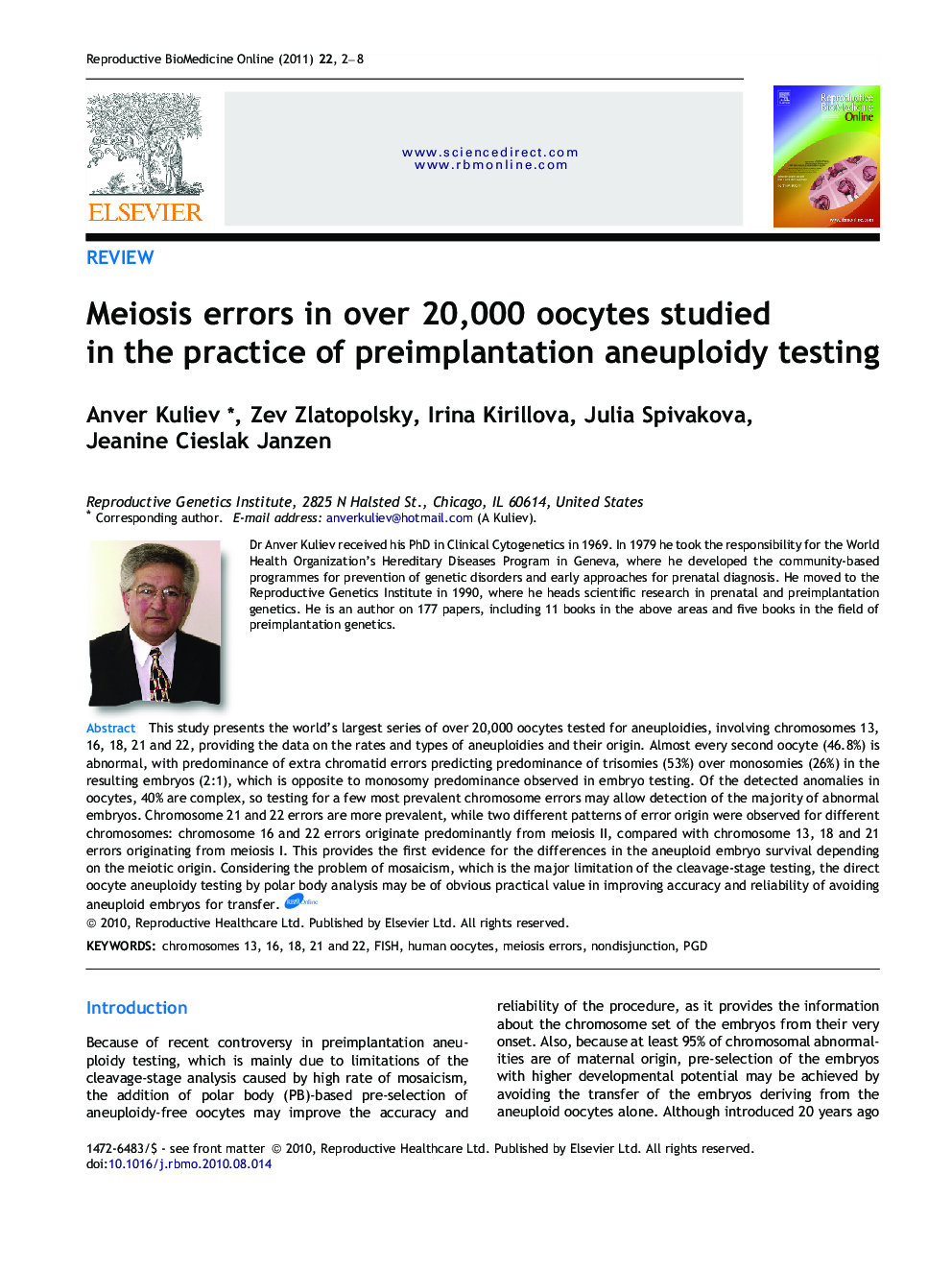| Article ID | Journal | Published Year | Pages | File Type |
|---|---|---|---|---|
| 3971803 | Reproductive BioMedicine Online | 2011 | 7 Pages |
This study presents the world’s largest series of over 20,000 oocytes tested for aneuploidies, involving chromosomes 13, 16, 18, 21 and 22, providing the data on the rates and types of aneuploidies and their origin. Almost every second oocyte (46.8%) is abnormal, with predominance of extra chromatid errors predicting predominance of trisomies (53%) over monosomies (26%) in the resulting embryos (2:1), which is opposite to monosomy predominance observed in embryo testing. Of the detected anomalies in oocytes, 40% are complex, so testing for a few most prevalent chromosome errors may allow detection of the majority of abnormal embryos. Chromosome 21 and 22 errors are more prevalent, while two different patterns of error origin were observed for different chromosomes: chromosome 16 and 22 errors originate predominantly from meiosis II, compared with chromosome 13, 18 and 21 errors originating from meiosis I. This provides the first evidence for the differences in the aneuploid embryo survival depending on the meiotic origin. Considering the problem of mosaicism, which is the major limitation of the cleavage-stage testing, the direct oocyte aneuploidy testing by polar body analysis may be of obvious practical value in improving accuracy and reliability of avoiding aneuploid embryos for transfer.As much as 95% of chromosomal disorders originate from maternal meiosis, so we present here the meiosis errors detected in aneuploidy testing of over 20,000 oocytes in practice of preimplantation diagnosis, including the rates and types of aneuploidies and their origin. Almost every second oocyte in IVF patients aged over 38 is abnormal, originating from meiosis I and meiosis II. One-third of oocytes have both meiosis I and meiosis II errors, with the potential of correction in almost half of them involving the same chromosome. Chromatid errors constitute the major source of aneuploidy, predicting predominance of trisomies over monosomies in the resulting embryos, which contrasts to monosomy predominance observed in embryo testing. Of the detected anomalies in oocytes, 40% are complex, so testing for a few most prevalent chromosome errors may detect the majority of abnormal embryos. The smaller chromosome 21 and 22 errors are more prevalent, while there are two different patterns of error origin for different chromosomes: chromosome 16 and 22 errors originate predominantly from meiosis II, compared with chromosomes 13, 18 and 21 errors originating from meiosis I. This provides the first evidence for the differences in the aneuploid embryo survival depending on the meiotic origin. The data show that direct oocyte testing by polar body analysis may be of obvious practical value in improving accuracy and reliability of avoiding the transfer of aneuploid embryos.
